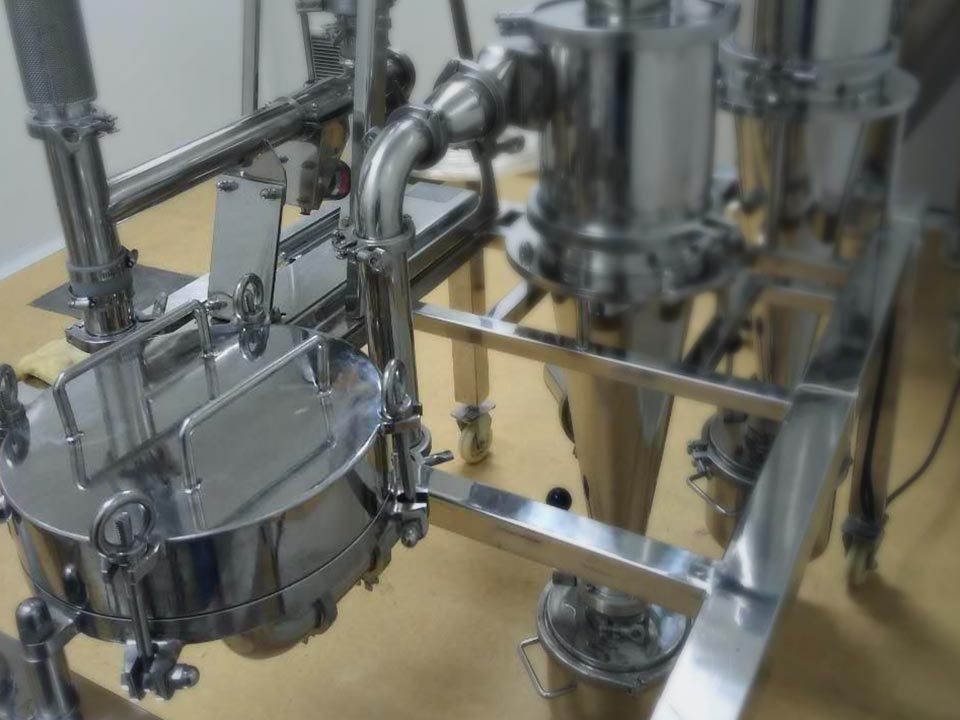How does the grinder ensure the aseptic production of APIs?
At present, the raw material drug market is showing the following major phenomena. First, some vitamins have entered a new price increase cycle; second, amino acids have jumped up and are still out of stock; third, the price of trace elements has doubled; fourth, raw materials Monopoly has also reached an outrageous degree. In addition to these, due to the frequent occurrence of drug safety incidents and the increasing attention of drug regulatory authorities to the production of sterile drugs, sterile APIs have become the focus of attention in the pharmaceutical industry.
Sterile APIs usually combine the refining process of the product with the aseptic process as a one-step operation unit in the production process. In the production process of aseptic raw materials, all links must be strictly controlled, especially equipment control. Among them, crushing equipment is widely used.

The pulverizer is a device that uses the high-speed relative movement between the movable toothed disk and the fixed toothed disk to crush the materials through the combined effects of the toothed disk impact, friction, and the impact between the materials. Generally speaking, the pulverizer can process hard and difficult to pulverize materials, such as the pulverization of Chinese herbal medicines, rubber, etc., and can also be used as a supporting equipment for the pre-processing procedures of the micro pulverizer and ultrafine pulverizer.
In the application of sterile APIs, some experts pointed out that pharmaceutical companies should use grinders with caution. Generally, it is recommended to use crushing and granulating machines, jet mills or others that can meet the corresponding process requirements and GMP specifications in the production of sterile APIs. The equipment, while examining its manufacturing quality and structure. There are two reasons why it is pointed out that it should be used with caution.
On the one hand, the pulverizer is not consistent with the production process of sterile APIs. In the process of material pulverization, it is easy to produce insoluble impurities and metal particle pollution, can not solve the problem of heat sensitivity, and it is difficult to ensure thorough and reliable cleaning or achieve the elimination. Bacteria requirements. On the other hand, as the aseptic production process usually has more variable factors than the final sterilization process, such as the air cleanliness, temperature and humidity of the production environment, and the operating habits of the staff, it increases the difficulty of its production. In addition, the sterilization of sterile APIs is special, and it is necessary to ensure that there is no heat source, and the sterilization process should be reliable and not be perfunctory. Therefore, special attention should be paid to the cleaning and sterilization of the pulverizer.
The cleaning method of the equipment is exquisite. First, remove the outer cover, flap teeth, sieve, and material hopper, remove the special powder receiving bag, move the powder receiving bag to the laundry room, and clean it according to the regulations. Secondly, the outer cover, flapping teeth, sieves, and material bucket should be moved to the ware washing room, soaked in 75% ethanol for 5 minutes in a stainless steel bucket, then brushed with a brush, and rinsed with purified water until clear.
After cleaning, it is the process of wiping dry. At this time, use a special rag for the inner surface of the equipment and a special rag for the outer surface of the equipment to wipe the inner and outer walls of the equipment until they are wet. Then use a brush dipped in 75% ethanol to scrub the inner and outer walls of the equipment, rinse with purified water until it is clear, dry the inner surface with a special cloth for the inner surface of the equipment, and dry the outer surface with a special cloth for the outer surface of the equipment. Then wipe the parts contacting the materials with 75% ethanol and let them dry naturally. After all the procedures are completed, put back the outer cover, flap the teeth, the sieve, and the material hopper.
In terms of sterilization, one of the most important aspects of using equipment in a sterile environment is the sterilization after cleaning. The usual sterilization methods include moist heat, dry heat, filtration, radiation, and ethylene oxide sterilization, among which the more effective methods are moist heat and dry heat sterilization. The pulverizer is a device directly in contact with the sterile API. The sterilization of it is usually performed on-line with steam, and then the environment and the appearance of the device are sterilized together with the formalin spray method.
Regarding the application of pulverizers in the production of sterile APIs, pharmaceutical companies should consider various factors, including equipment characteristics, process routes, and GMP as consideration factors. In addition, for equipment companies, it is necessary to strengthen technological innovation, develop a pulverizer that can be used in the production of aseptic raw materials as soon as possible, and constantly improve and improve the performance of the pulverizer in the production of aseptic raw materials.
